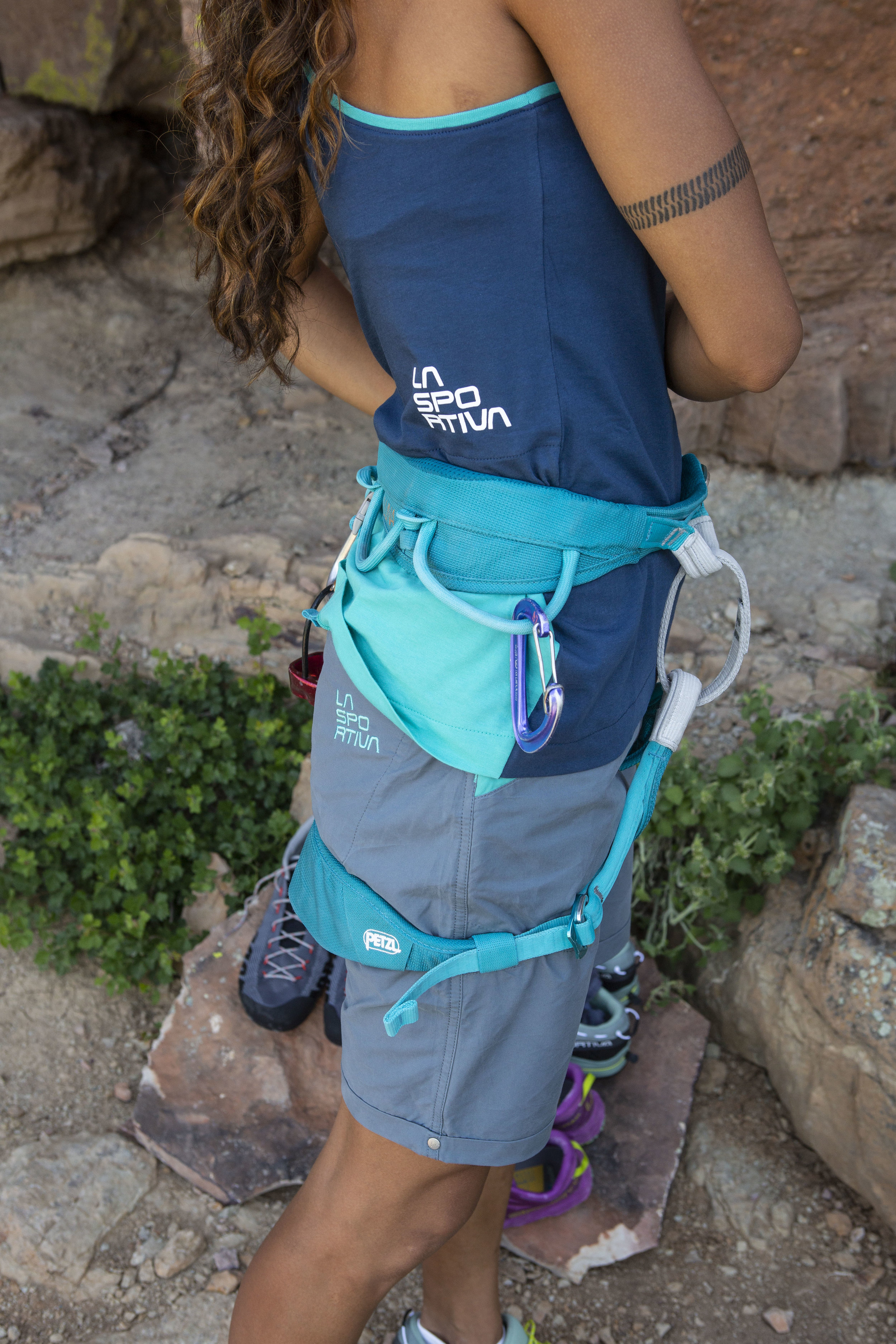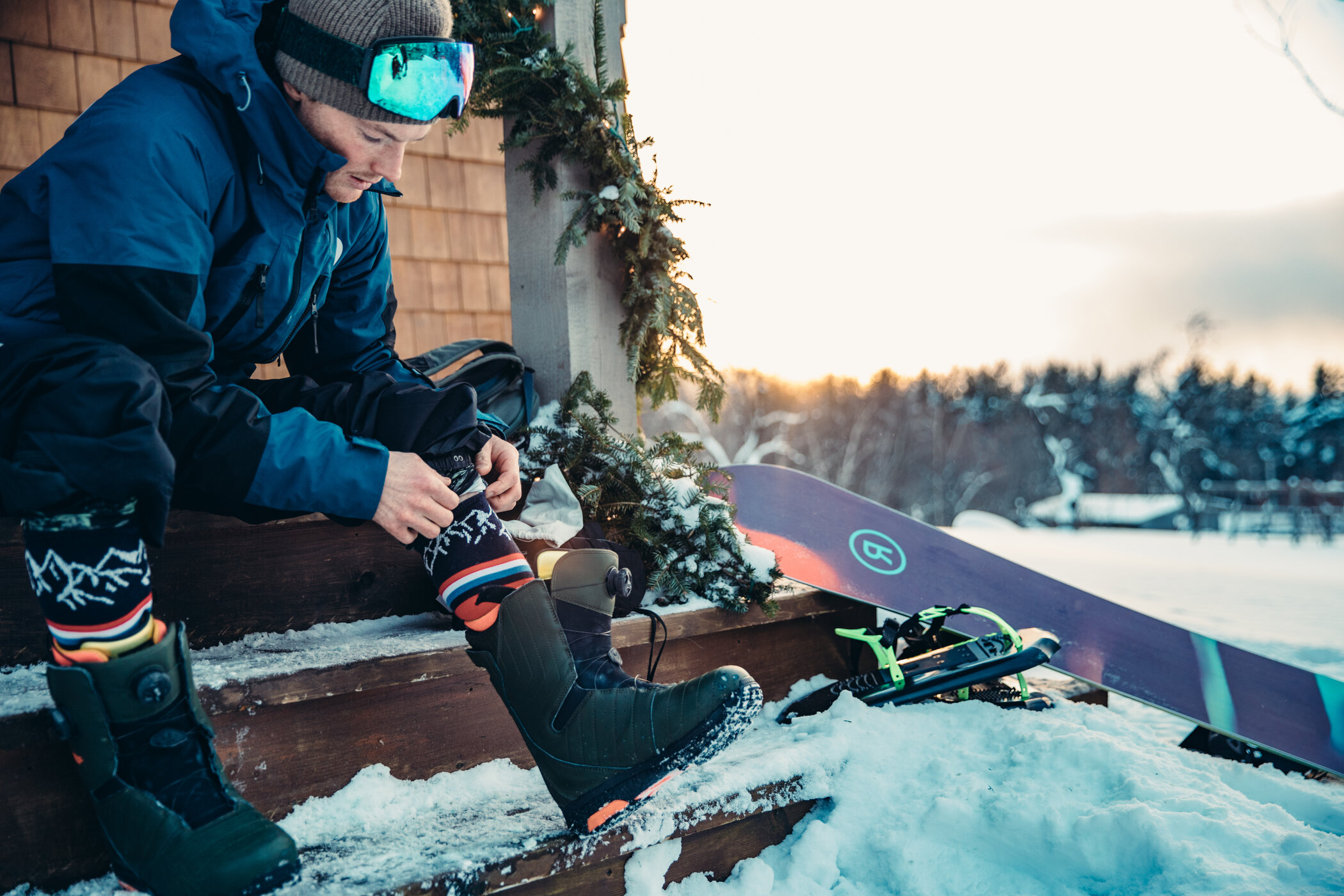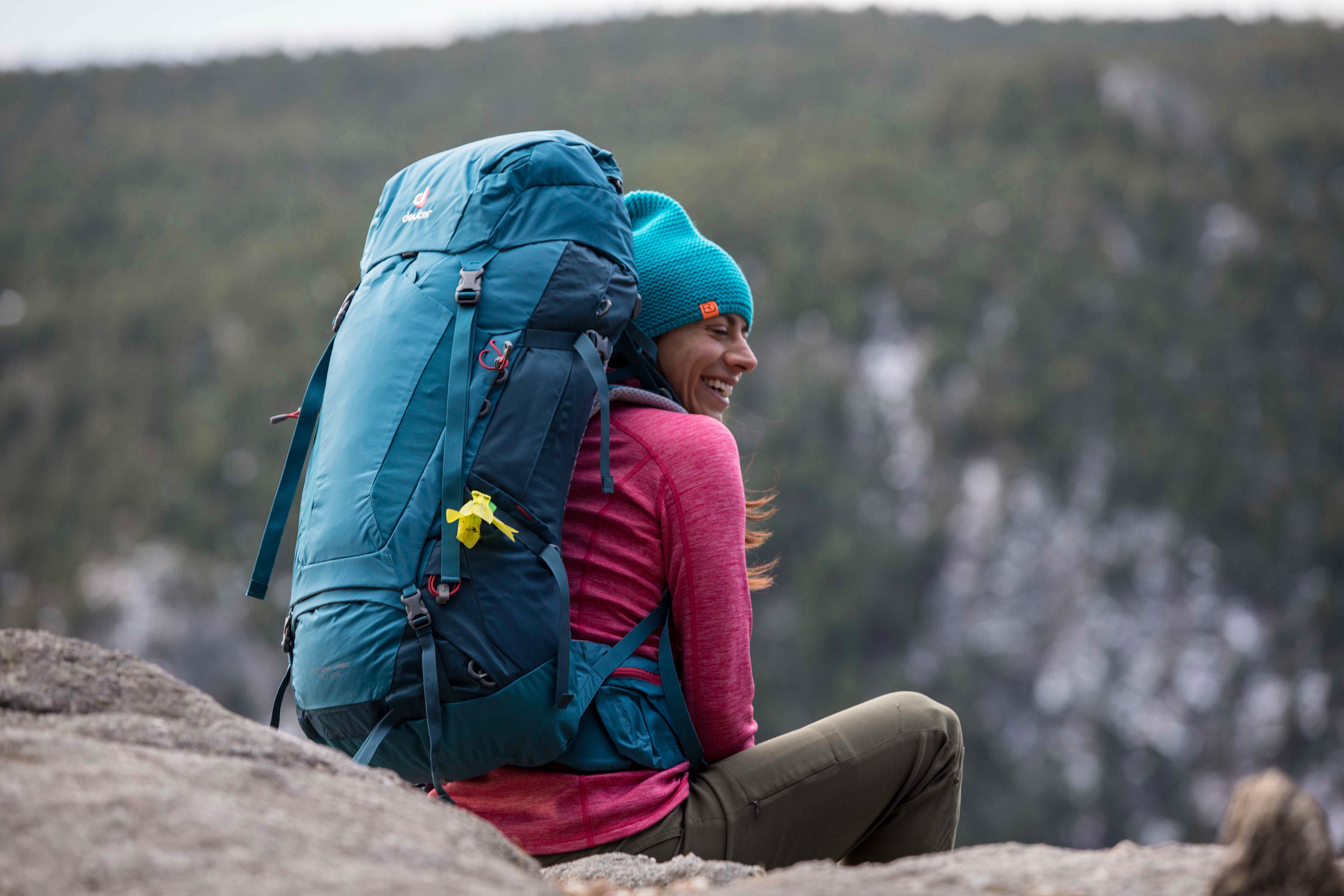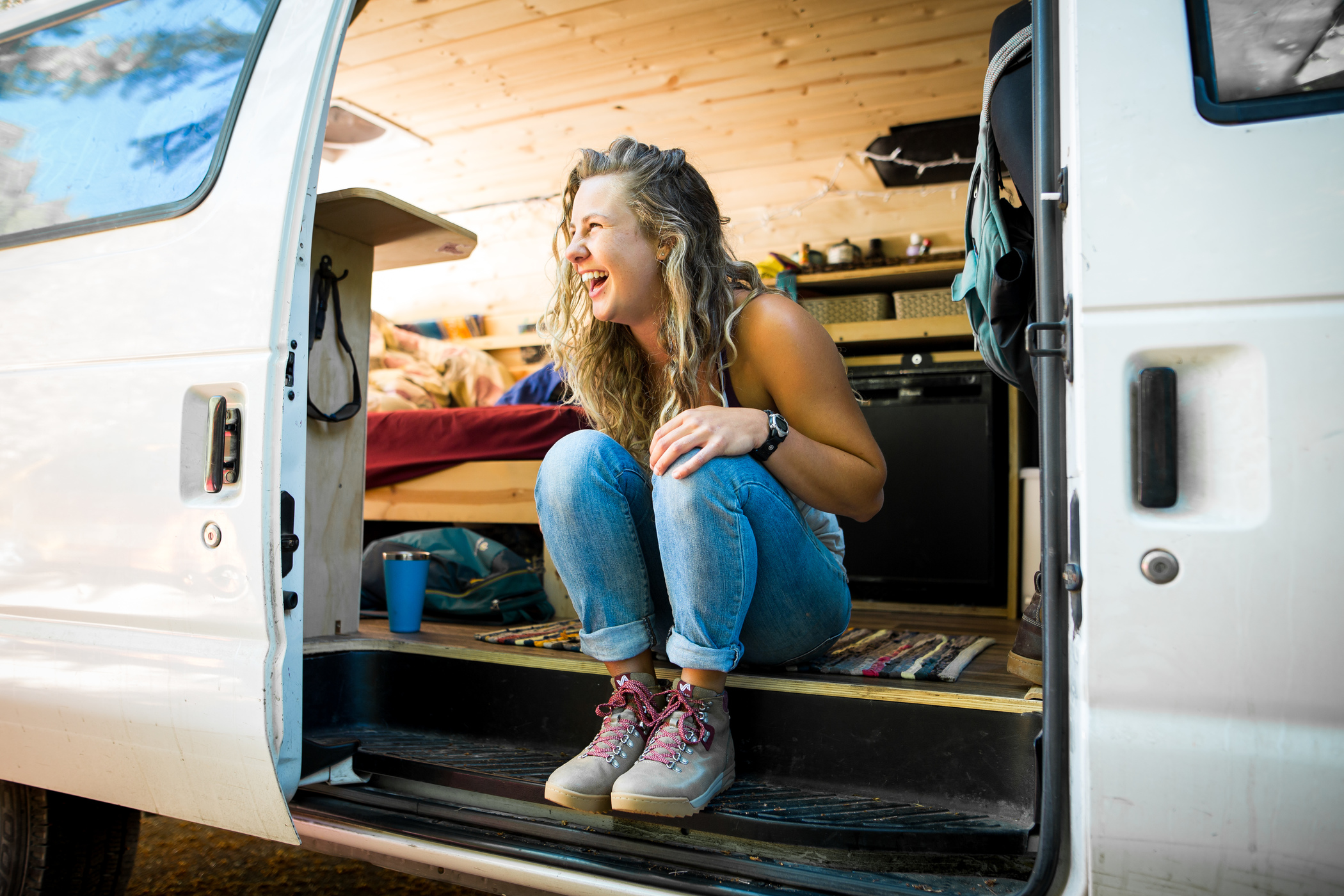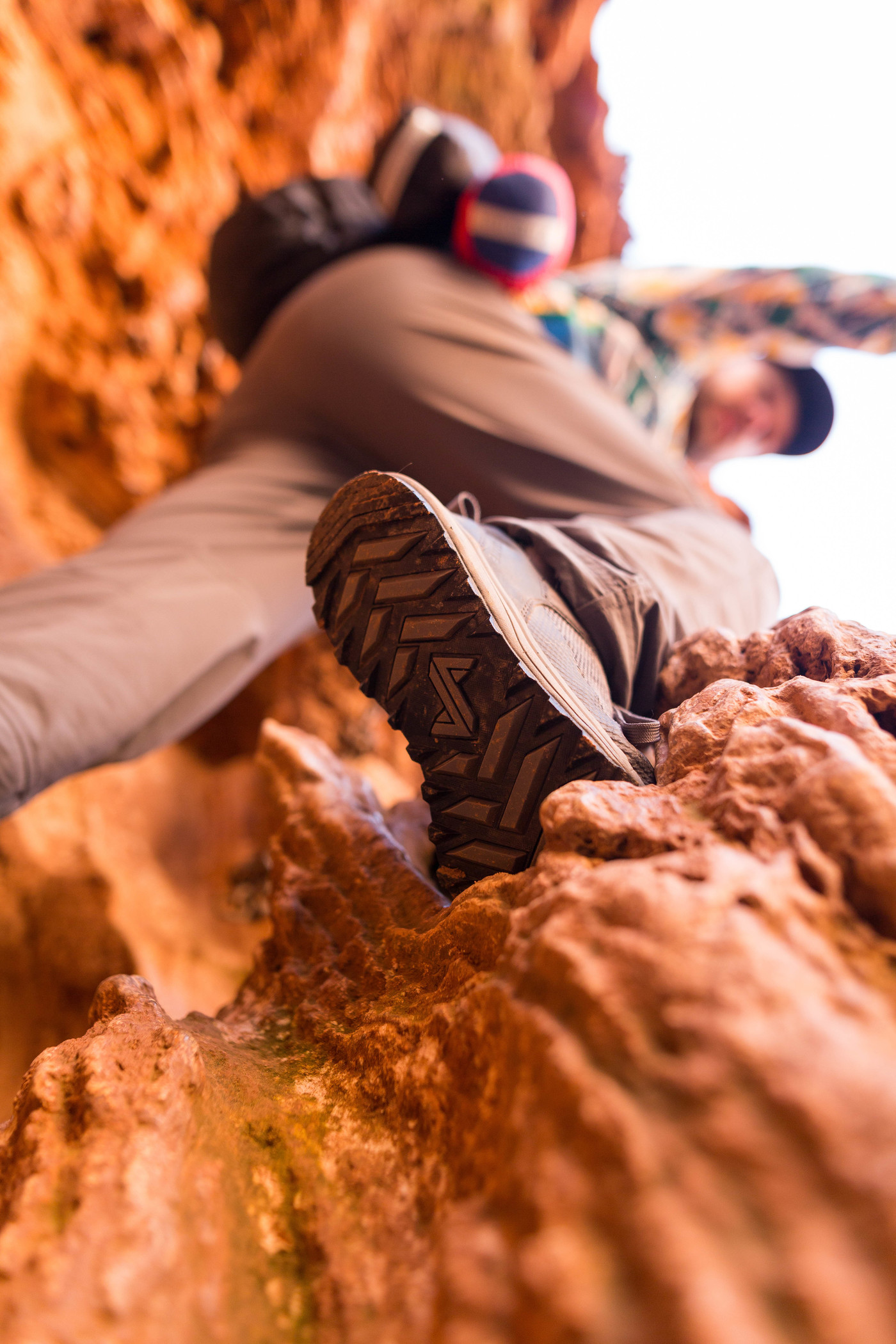Trip Report – Mountain Mahila Ama Dablam and Imja Tse 2017
/Trip Report – Mountain Mahila
Ama Dablam and Imja Tse 2017
Kim, Phurba, Tammy and Ida on the trek from Lukla to Imja Tse basecamp. (Photo credit: Kim Couri)
Ama Dablam is the most iconic peak in the Everest region, dominating the landscape with it’s pointy summit and dramatic ridgelines. While it is a fair chunk shorter than Mount Everest, the peak requires a higher level of technical climbing. Our team of four women, including a local Sherpa woman, had set our sights on Ama Dablam, hoping to climb Imja Tse (also known as Island Peak) at 20,305 feet before tackling our main objective at 22,345 feet. A year before we de-boarded the tiny plane at Lukla airport in the Khumbu region of Nepal we had come up with the idea of making a climbing film for and about women, something that we had notice was lacking in the climbing community. As part of our project we sponsored Phurba Sherpa, an early career climbing Sherpa, to be part of our team. Hoping that by gaining experience and developing her climbing skills she will be able to break into the male-dominated climbing industry in Nepal. We included the Nepali word for women, “Mahila” in our team name; as we hope to examine how women can break gender barriers and achieve goals. This journey is also a story of recovery, as one team member (Ida) underwent major lung surgery in September 2016 and lost the upper lobe of her right lung to a rare type of cancer. This climb was a way to stay inspired and motivated to train, and to support each to get better and stronger than ever before.
Ida on top of Chhukung Ri looking at Ama Dablam. (Photo credit: Ida Vincent)
After arriving in Lukla porters carried our climbing packs straight to Imja Tse basecamp, while we spent the next eight days slowly making our way. We included two rest days along the way for acclimatization, although we quickly learnt that rest days in Nepal involves hiking up some 3000 feet to a view point, or a up a peak, for acclimatization. It didn’t feel much like rest. Team members Ida and Kim also contracted a bad cold along the way, making the acclimatization and high altitude even harder to contend with. Ida also found that it was harder for her to acclimatize now than pre-surgery, missing 20% of her lungs, she got short of breath a little quicker than on previous trips to altitude and she suffered a high-altitude headache for the first couple of days above 18,000 feet. However, by the time we got to Imja Tse she had recovered enough to take on the summit. Kim on the other hand was still suffering badly from her cold and opted to stay in camp while the rest of the team started out at midnight. The first half of the climb was part steep trail and part rock scrambling up to what is known as crampon point. This is where you step on to the glacier and as such put on your crampons. We got here before first light and as we reached the ladder crossing the sun was only just beginning to rise. Four ladders had been tied together, spanning a vast crevasse, it was an exhilarating crossing. By the time we got to the final headwall leading up to the summit the sun was shining. We clipped into the fixed lines using our ascenders to get up the icy near vertical slope, and finally stood on the summit 6.5 hours after we set out from base camp. We were the third team on the summit that day. Looking down we could see an ant-trail of climbers still on their way up. We were exhausted by the time we were back down in base camp and had to pack up our gear to start trekking towards Ama Dablam basecamp. Again, a rest day would have been nice...
Nigma Sherpa and Phurba Sherpa just below the summit of Imja Tse setting up their rappels. (Photo credit: Ida Vincent)
We reached Ama Dablam basecamp two days after summiting Imja Tse and by now Ida had developed a wicked high altitude cough, also known as the Khumbu cough. At elevations above 18,000 feet the dry cold air can start to break down the lining of your lungs resulting in a violent cough. Kim on the other hand had recovered from her cold and finally felt good. Tammy and Phurba were just as healthy and strong as always. Finally, we got our first real rest day! After one day of proper rest we started the acclimatization on Ama Dablam by hiking up to Advanced Base Camp and then back down to base camp again. Ida was still coughing badly and the next day it became obvious that she had damaged her ribs on the side of her previous surgery from coughing so aggressively. The whole team still decided to ascend to Camp 1 at 19,000 feet. For Ida it was a practice in pain tolerance, gaining 3000 feet of elevation while carrying a pack at altitude with was now obvious was fractured ribs. Above advanced base camp the trail turned into boulder hopping and scrambling followed by a final short section up a fixed line on some exposed rock. Despite all everyone made it to camp 1 and got to watch a spectacular sunset.
Tammy, Ida and Phurba on the summit of Imja Tse at 20,305 feet. (Photo credit: Ida Vincent)
The next morning Tammy, Kim and Phurba continued up to camp 2 at 19,600 feet while Ida descended, climbing technical rock with fractured ribs was not a good idea. We all rendezvoused in base camp that evening. We had another two days of rest before we would start the final summit push, the weather forecast looked bad, but the team was still hopeful. Ida’s pain was less while resting and she hoped to try for the summit. The night before however, Ida coughed all night and it became obvious that her bid for the summit was over. She waved the rest of the team goodbye as they set off for their summit bid and a couple of hours later was helicoptered to Lukla and flown to Kathmandu for a doctor’s examination and x-rays confirming fractured ribs and torn muscles. The others made good time to Camp 1, still worried about the unfavorable weather forecast. The next morning after sleeping in camp one Tammy, Phurba, and Kim continued to camp 2. It requires some technical rock climbing using fixed lines and ascenders to get the short distance from camp 1 to camp 2, all up about 4 hours of climbing. In the afternoon while resting in camp, they watched dark clouds sweep over and it started to snow. However at 11:30 pm, when they got up to start the summit push, it was clear and at 12:30 am, they all set off for the top. The route begins with mixed climbing of rock and ice, including a pitch called the Grey Tower, known to be the crux of the route. There are then a series of airy ridge walks and a small icy overhang beneath camp 3. Tammy and her Sherpa, Kipa got to Camp 3 at 21,100 feet, just at sunrise (7am) and waited for Kim and Phurba who arrived about one hour later with their Sherpa.
Phurba Sherpa on descending Imja Tse. (Photo credit: Ida Vincent)
After camp 3, Tammy and Kipa continued to lead the team toward the summit. Phurba, Kim and their Sherpa, Jangbu followed. From this point, the route continued on fixed lines and was made up of hard packed snow and ice, which minimally required the use of an ice axe. There was a large crevasse crossing near the large hanging glacier, which involved a combination of jumaring on the fixed line, climbing with an axe, and front pointing, you had to climb into the crevasse and up the other side. On November 17th, Tammy and Kipa made it to the summit at 11:30 am followed by Phurba, Kim and Jangbu at 12:30 pm.
The full Mountain Mahila team at Camp 1 on Ama Dablam: Kim, Ida, Tammy and Phurba. (Photo credit: Ida Vincent
Tammy and Kipa left the summit, and high-fived Phurba, Kim and Jangbu as they continued on to the summit. After reaching the summit, both teams started their descents quickly. The descent involved many rappels and prussicing down tighter lines. Tammy and Kipa reached camp 2 at 5pm, sunset, while the rest of the team were at camp 3 by that time. Now descending in the dark, it took Phurba, Kim and Jangbu several hours to get back down to camp 2. Jangbu was ahead, making it difficult for Phurba and Kim to navigate the correct fixed ropes to rappel on. At this time, it got very cold, but luckily the weather held out. Phurba, Kim and Jangbu returned to camp 2 at 10:30 pm.
Tammy on the summit of Ama Dablam. (Photo credit: Tammy Martin).
The next morning, Kim woke up with pain in her pinky finger and realized that she had gotten frostbite the night before. As planned, the team descended from camp 2 down to basecamp that day; and at basecamp, Kim started the process of rewarming her finger. The following day, the team rested and packed at camp. On November 20th, the team left basecamp for Namche on the two-day trek to Lukla airport. After lunch near Deboche a couple of hours hike from Ama Dablam basecamp, they decided to call for a helicopter since Kim (in addition to frostbite) had developed a fever. Kim, Tammy, Phurba and Lhakpa Sherpa left Deboche via helicopter and arrived in Kathmandu. Kim went to the hospital for treatment, and felt better after several days of rest and medication.
Ida, Tammy, Kim and Phurba were reunited and so happy to see each other safely back in Kathmandu!
Kim and Phurba on the summit of Ama Dablam. (Photo credit: Kim Couri).
Impressions of Deuter Packs
Guide 40+ SL
This is the first pack we tried for our expedition. We all absolutely loved the way this pack carries, we often forget we were even carrying a load. On technical terrain it was a dream. While we all liked the idea of gear-loops on the waist strap, it would have been good if one side was a pocket instead for easy access to items such as lip-balm and sunscreen. A water bottle pocket on the poutside of the pack would also have been useful. Other than that, we loved this pack and the only reason we opted to go for a different pack (apart from Phurba Sherpa who used this pack on the entire expedition and was extremely happy with how it performed) was the size. Carrying a lot of gear, -20 degree sleeping bags and high altitude boots we needed more space.
ACT Lite 60+ 10 SL
This is the packs we used on our expedition and we loved them! It carried beautifully and the two pockets on the waist strap were excellent for keeping snacks and sunscreen etc. handy. The packs were really roomy making it easy to carry all our gear and film equipment. This pack had all the bells and whistles we hope for together with excellent hip support and being lightweight. An all around winner!











